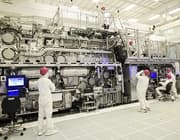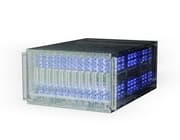Gartner Says Worldwide PC Shipments in the First Quarter of 2014 Declined 1.7 Per Cent
Worldwide PC shipments totalled 76.6 million units in the first quarter of 2014, a 1.7 per cent decline from the first quarter of 2013, according to preliminary results by Gartner. The severity of the decline eased compared with the past seven quarters.
“The end of XP support by Microsoft on 8th April has played a role in the easing decline of PC shipments,” said Mikako Kitagawa, principal analyst at Gartner. “All regions indicated a positive effect since the end of XP support stimulated the PC refresh of XP systems. Professional desktops, in particular, showed strength in the quarter. Among key countries, Japan was greatly affected by the end of XP support, registering a 35 per cent year-over-year increase in PC shipments. The growth was also boosted by sales tax change. We expect the impact of XP migration worldwide to continue throughout 2014.”
“While the PC market remains weak, it is showing signs of improvement compared to last year. The PC professional market generally improved in regions such as EMEA. The US saw the gradual recovery of PC spending as the impact of tablets faded,” Ms Kitagawa said.
The PC market continued to be tough for many vendors. Economies of scale matter tremendously in this high-volume, low-profit market, which is forcing some vendors, such as Sony, out of the market. In contrast, all of the top five vendors, except Acer, registered year-over-year shipment growth. The top thee vendors — Lenovo, HP and Dell — have all confirmed the importance of the PC business as part of their overall business strategies.
Lenovo experienced the strongest growth among the top five vendors. Its shipments grew 10.9 per cent, and Lenovo extended its position as the worldwide leader. The company’s shipments grew in all regions except Asia/Pacific, where growth in China has been problematic. Overall, the China market slowed again, in part due to the long holiday in the middle of the quarter.
The share difference between Dell and HP once again narrowed compared to last quarter. In the first quarter of 2014, HP achieved its fastest shipment growth of the last two years. HP’s shipment growth in EMEA well exceeded the regional average, which improved HP’s overall growth. Dell maintained a strong position in the market. Since the completion of the leverage buyout last year, Dell has been aggressively expanding its PC business throughout the regions. The first quarter of 2014 was the third consecutive quarter of PC shipment growth for Dell, registering its highest growth since the fourth quarter of 2011.
In the US market, PC shipments totalled 14.1 million units in the first quarter of 2014, a 2.1 per cent increase from the same period last year (see Table 2). HP maintained the No. 1 position, as it accounted for 25 per cent of PC shipments in the US market. Dell and Lenovo experienced the strongest growth among the top five vendors, with growth rates of 13.2 and 16.8 per cent, respectively.
“In terms of the major structural shift of the PC market, the US market is ahead of other regions,” Ms Kitagawa said. “The installed base of PCs started declining in 2013, while the worldwide installed base still grew. The US PC market has been highly saturated with devices: 99 per cent of households own at least one or more desktops or laptops, and more than half of them own both. While tablet penetration is expected to reach 50 per cent in 2014, some consumer spending could return to PCs.”
The EMEA PC market saw positive growth after eight quarters of decline. Shipments in EMEA totalled 22.9 million units in the first quarter of 2014, a 0.3 per cent increase from the same period last year (see Table 3). Improvements were driven by a PC refresh in the professional market from both the XP effect, and a general increase in professional spending.
“The end of support for Windows XP has boosted commercial desktop sales, driven in part by delayed government buying in major Western European countries,” said Isabelle Durand, principal analyst at Gartner. “The professional PC market looks stronger overall, as business and governments adjust to a more favourable economic environment. We also expect to see the impact of XP migration to continue throughout 2014.”
Traditional notebook volumes continued to be squeezed during the quarter. Consumers continued to buy premium ultramobiles as notebook replacements, and are also purchasing tablets as additional devices. While new hybrid models entered the market volumes remained low, but are expected to ramp-up through 2014.
“In Eastern Europe PC shipments continued to decline during the first quarter of 2014, with the Russian market looking particularly weak,” said Ms Durand. “PC demand was dampened, as the weaker Russian Rouble increased the cost of PCs. Moreover, the general political situation shifted buying priorities away from PCs, and current public sector IT budgets were limited due to the Winter Olympics.”
HP retained the top vendor position in the EMEA market, and its shipments grew 15.3 per cent in the first quarter of 2014. Lenovo has now had seven consecutive quarters of strong growth, which helped it cement the No. 2 spot in EMEA with 36 per cent growth in the first quarter of 2014. It also saw its presence in the consumer PC market increase. Asus also performed well and currently leads the hybrid market.
In Asia/Pacific, PC shipments reached 24.9 million units in the first quarter of 2014, a 10.8 per cent decline from the first quarter of 2013. Pressure on traditional notebooks continued as the installed base transitioned to alternative devices and replaced only on an as-needed basis. New hybrid ultramobiles with lower price points were available, but demand remained slow as buyers evaluated usage scenarios and application availability amid a market with many other options.
These results are preliminary. Final statistics will be available soon to clients of Gartner's PC Quarterly Statistics Worldwide by Region programme. This programme offers a comprehensive and timely picture of the worldwide PC market, allowing product planning, distribution, marketing and sales organisations to keep abreast of key issues and their future implications around the globe. Additional research can be found on Gartner's Computing Hardware section on Gartner's web site at http://www.gartner.com/it/products/research/asset_129157_2395.jsp




